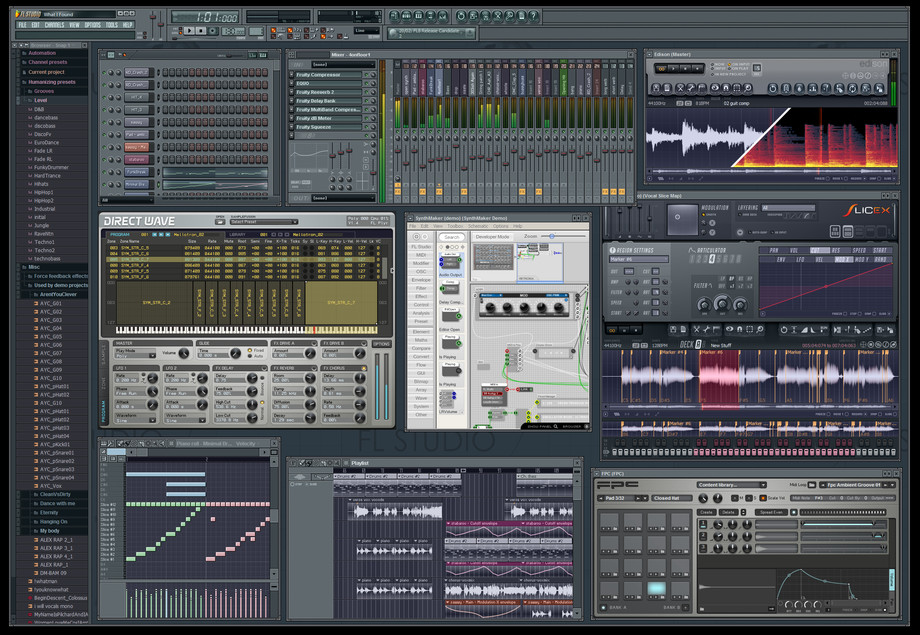Image Line FL Studio 20 Signature Edition Sequencing and Music Production Software with Audio Recording, Virtual Instruments, and Plug-in Processors - Mac/PC VST2, VST3, AU. Then all the audio from the DAW is passing through the audio interface. Now when you go to the MIDI settings, you enable your keyboard to give commands in the DAW. When you do that, you have effectively connected your midi keyboard to your audio interface. When you load a VST in the DAW, now you can play it with your midi keyboard.
Most of us have experienced the panic of having a USB audio interface fail to be recognised by our DAW. It's a frightening ordeal. But never fear. For the most part, a non responsive interface indicates incomplete software setup, rather than a true malfunction or defect.
When you're frustrated with not being able to get up and running, or if you thinking you might have a defective product, this 10-second 'is-it-broken' test can restore the confidence necessary to continue working with the product and to complete any needed software setup or authorization process.
- Enable microphone access for FL Studio. The recording filter (shown above) must be set to record audio (Right-Click the record button), if you are recording to disk (Playlist recording). An audio source must be connected to your audio device audio input/s (DOH!
- In FL Studio I have the Motif set up correctly aswell as the ASIO settings for the interface. In 'Device Manager' It states that the Roland Interface is working properly. When I open up the FL mixer to select the interface as an input from the drop down menu, a question mark is in which I cannot select anything.
To verify that the device is working, and is being seen by the computer…
- On Windows 8, 7, Vista, or XP, open the Device Manager.
- Disconnect the controller from the computer, count to 5, then reconnect the controller
Does the list of devices at all change, refresh, or flash? If yes…Good, the product is recognized by the computer
Having determined that your interface is actually working, here are some things you can try if your interface isn't being recognized by Studio One. They go in increasing order of desperation, and apply only to Windows machines.
1. Make sure it's switched on & selected
Sorry, but we had to suggest this as the #1 solution to an unresponsive interface. No disrespect intended! It's easy to forget simple stuff like this.
Select your interface from the dropdown menu in Options/Audio Setup.
If your interface isn't listed, proceed to step 2.
2. Try disconnecting any other USB devices that are in use.
3. Uninstall / Reinstall USB drivers
The problem may well be a corrupt installation of your USB interface drivers. Try removing them and re-installing. You can download the latest drivers at the device manufacturers website. Make sure the drivers match motherboard bit architecture (32 bit / 64 bit)
4. Restart
IT troubleshooting 101. The ancient Mayan sorcery of turning it off, and turning it back on again.
5. Use Ccleaner Registry Scan
Occasionally, running a registry scan can help with this problem, especially if you don't normally use a registry cleaner.
6. Use this Microsoft Troubleshooter
7. Try different USB port / USB hub
You may have a dead USB port on your hands. Try switching ports.
8. Check on different PC
If you have another PC handy, check to see if the interface works on it. If it does, it's a problem with the computer. If it does not, it's probably an issue with the interface.
9. Run sfc/scannow from administrator command prompt
Run a search for 'cmd'. Right click to run it as administrator. Type sfc/scannow and hit enter. Wait for the scan & repair to finish
10. Follow this tutorial:
http://www.howtogeek.com/222532/how-to-repair-corrupted-windows-system-files-with-the-sfc-and-dism-commands/ (You'll need a disc image of the Windows OS for the DISM part of this)
11.Update USB port drivers (use device manager)
- WinKey + R (Run)
- Type 'devmgmt.msc'
- Locate 'Universal Serial Bus Controllers'
- Right click on the relevant device
- Click 'Update Driver Software.
12.Uninstall/reinstall USB port drivers
Same as #9, but instead, click Properties/Driver/Uninstall
Fl Studio Multiple Audio Interfaces
Then you can scan for hardware changes and reinstall the driver.
13.Uninstall/reinstall soundcard drivers

In Control Panel/Programs and Features, uninstall your soundcard driver, then re-download and re-install it.
15. If using a USB hub try connecting directly to a USB port on your computer. With any audio interface, you must trade performance/latency for stability. When connected via a hub, this trade off is less favourable.
Fl Studio Audio Interface Compatibility
16. Try connecting the interface to its own USB bus. To view what bus your interface is connected to:
Open your computer's device manager (available from Control Panel), open the View menu and select 'Devices by connection'. Expand the various busses until you find your USB controllers.
17.Upgrade to Windows 10
If you're running windows 7 or 8.x, you're due an OS update anyway. It's free, and Windows 10 delivers the most optimized and rock-solid PC based audio editing experience to date.
18.Clean reinstall Windows
If all else fails- reinstall the OS:

